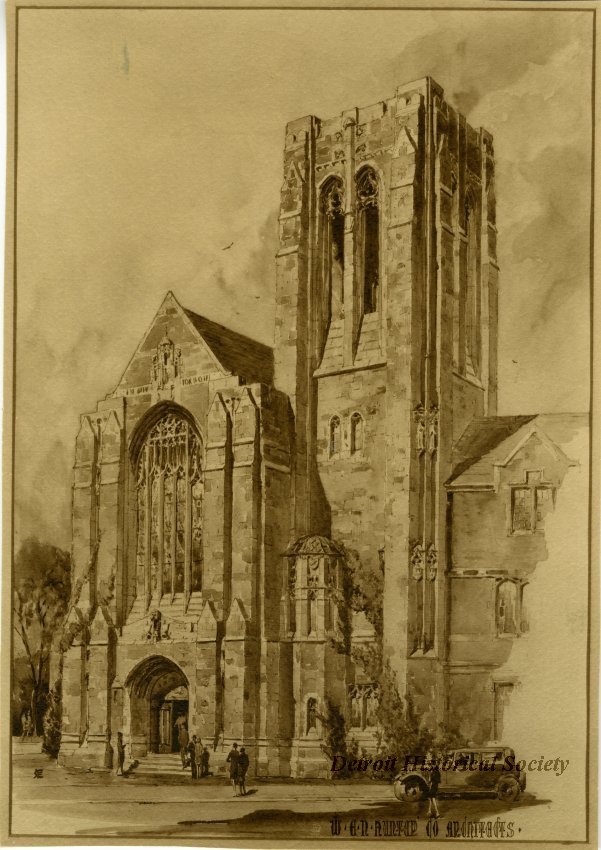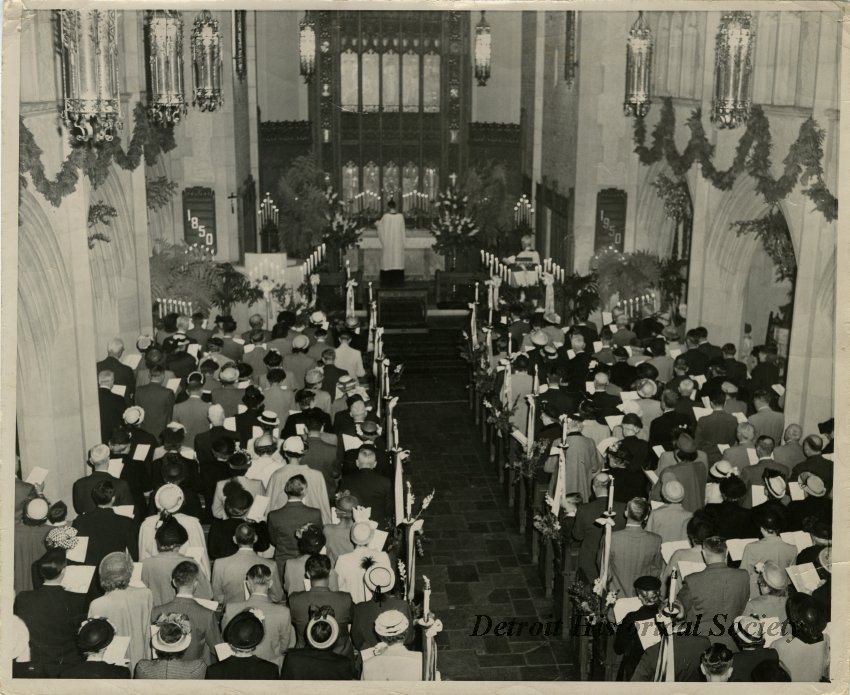Encyclopedia Of Detroit
Historic Trinity Lutheran Church
Historic Trinity Lutheran Church was organized in 1850 with meetings first held in private homes. The next move was to the rear chapel of Christ Episcopal Church on Hastings and Woodbridge Streets. Shortly after, the congregation purchased a structure from Western Seaman’s Friend Society of Mariner’s Church and moved it to Rivard and Larned Streets. This building soon proved too small, so in 1866 a new brick church was built at Gratiot Avenue and Rivard Street in the neighborhood known as “German Town.”
In the late 1920s, Trinity began considering renovation of their 1866 structure. However, congregation member Charles Gauss stepped forward and offered to finance the construction of a new church. The old building was demolished, and the cornerstone of the current church was laid in 1929. The dedication took place on February 15, 1931.
Architect W.E.N. Hunter of Detroit designed the varicolored granite and limestone building in the 16th Century Pier and Clerestory Gothic style. Eleven bells, made and installed by John Taylor of Lestershire, England, are housed in the 104-foot Luther Tower.
Several skilled artists and craftsmen in metal, stone, wood, painting, tile and stained glass were commissioned. They include Peter Bernasconi of Detroit, who built the altar, and tile work done by Pewabic Pottery. The stained-glass windows were made by Henry Lee Willet of Philadelphia and restored by the original company in 1996-1998. The Opus 808 thirty-two-rank organ was designed and built by Ernest Skinner, regarded as the premier organ builder of his time. In 1991, the organ was fully restored by Skinner scholars.



